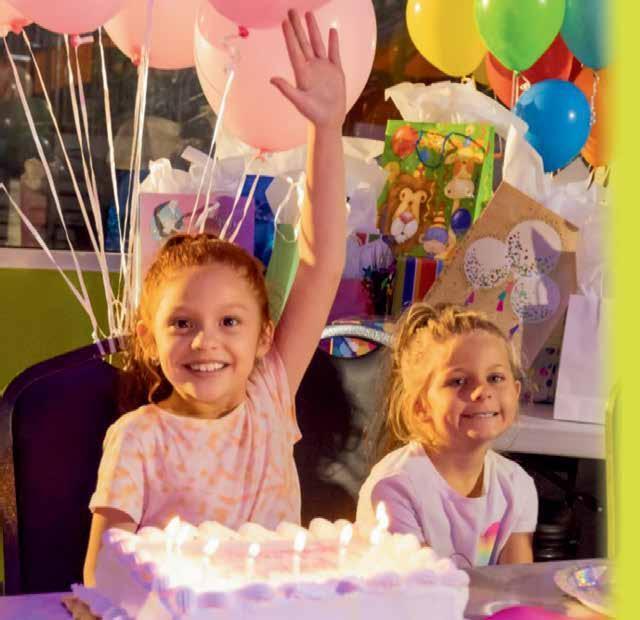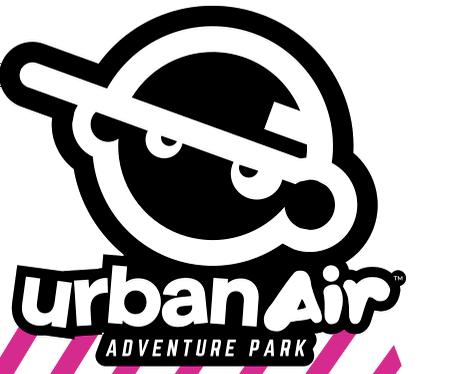


































Welcome, February! This may be the shortest month but there is a lot going on. Winter is almost over, love is in the air, the midwinter break is upon us and things are looking up.
Summer may feel far away, but now is the perfect time to start planning for it. Our annual comprehensive camp guide (page 23) is here to make the process easier, featuring everything from day camps to specialty programs tailored to your child’s interests. Whether your little one is into sports, STEM, arts, or adventure, there’s a camp waiting to create unforgettable memories for them this summer. And keep an eye out for our Ultimate Guide to Summer Camp special issue, coming out in just a few weeks!
In addition, we know many families are evaluating their children’s educational options. Our feature on public school alternatives offers valuable insight for parents considering new paths (page 16), along with detailed listings of charter schools in the area (page 18). Whether you’re looking for a smaller class size, a focus on faith-based education, or a unique approach to learning, we’ve gathered resources to help you make informed decisions.
We are also tackling two critical topics affecting families today. With the teen vaping epidemic continuing to rise, we provide insight into the latest trends and offer tips to help parents address this growing concern (page 12). Additionally, the FDA’s recent ban on red dye no. 3 is making waves in the food and candy industries. We break down what

this means for your family’s health and how to navigate the changes (page 8).
On a lighter note, everyone loves a good birthday freebie, and we’ve rounded up a list of places offering fun perks to celebrate your special day (page 34).
Of course, we’ve also packed this issue with our February events calendar, ensuring your family stays in the know about the best happenings around the city. There’s no shortage of opportunities to create cherished memories this month.
Here’s to staying warm, informed, and inspired. Happy reading!
Jeannine
PUBLISHER: Clifford Luster
EDITORIAL DIRECTOR: Jeannine Cintron
ASSOCIATE PUBLISHER: Erin Brof
ADVERTISING DIRECTOR: Stacie Goldberg
DEPUTY EDITOR: Danielle Ramos
EDITOR-AT-LARGE: Donna Duarte-Ladd
EVENTS MANAGER: Shara Levine
SENIOR DIGITAL EDITOR: Thalia Fernandez
DIGITAL EDITOR: Náosha Gregg
EDITORIAL ASSISTANT: Alexa Lutter
PARTNERSHIP MANAGERS: Lauren Alperin, Lauren Anchin, Joan Bergman, Mary Cassidy, Suzanne Cirigliano, Chris Cunnington, Lori Falco, Kent Foglia, Shelli Goldberg-Peck, LynnMarie Hanley, Lisa Herlihy, Nicole Miller, Janine Mulé, Nina Spiegelman, Gwen Tomaselli
MARKETING & STRATEGY DIRECTOR: Rosalia Bobé
MARKETING & EVENTS ASSISTANT: Ashley Rivera
SALES & MARKETING ASSISTANT: Elana Cantor
MARKETING ASSISTANT: Lorens Morris
MEDIA SALES ASSISTANT: Ruston Ropac
ART DIRECTOR: Leah Mitch
WEB DEVELOPER: Sylvan Migdal
GRAPHIC DESIGNERS: Arthur Arutyunov, Connie Sulsenti
EDITORIAL CONTRIBUTOR: Mia Salas
CONTACT INFORMATION
ADVERTISING: (718) 260-4554
Advertising@NewYorkFamily.com
CIRCULATION: (718) 260-8336
Tina@NewYorkFamily.com
ADDRESS: New York Family Media/Schneps Media 15 MetroTech Center, Seventh Floor Brooklyn, NY 11201
PRESIDENT: Victoria Schneps-Yunis
CEO: Joshua Schneps
COO: Clifford Luster New York Family has been awarded the PMA Gold Award for for Overall Design and Bronze for Website General Excellence.
Share your feedback and ideas about family life in New York! Email us at editorial@newyorkfamily.com and tag us at #newyorkfamily






























By Náosha GreGG
The Food and Drug Administration has banned Red No. 3, a synthetic dye used to give foods their bright, cherry coloring.
The announcement came Wednesday morning after the FDA announced that the product was linked to cancer in lab animals. According to the Center for Science in the Public Interest, it is a carcinogen, a natural or synthetic substance, organism, or agent that can cause cancer.
“The FDA is amending its color additive regulations to no longer allow for the use of FD&C Red No. 3 in food and ingested drugs in response to a 2022 color additive petition,” the FDA said in a statement. “The petition requested the agency review whether the Delaney Clause applied and cited, among other data and information, two studies that showed cancer in laboratory male rats exposed to high levels of FD&C Red No. 3 due to a rat-specific hormonal mechanism. The way that FD&C Red No. 3 causes cancer in male rats does not occur in humans.”
While the dye only proved to cause cancer in animals, the ingredient is still found in hundreds of foods, including strawberry-flavored Ensure, the cherries in fruit cocktail, and many varieties of candy corn.
“The Delaney Clause is clear; the FDA cannot authorize a food additive or color additive if it has been found to cause cancer in humans or animals,” Jim Jones, the FDA’s
deputy commissioner for human foods, told CBS News. “Evidence shows cancer in laboratory male rats exposed to high levels of FD&C Red No. 3.”
The decision came after a petition filed by the CSPI, who called for the additive to be pulled from the market.
“At long last, the FDA is ending the regulatory paradox of Red 3 being illegal for use in lipstick, but perfectly legal to feed to children in the form of candy,” said CSPI president Dr. Peter G. Lurie in a statement. “The primary purpose of food dyes is to make candy, drinks, and other processed foods more attractive. When the function is purely aesthetic, why accept any cancer risk?”
The history of red dye in the United States is lengthy. In 1960, Congress made clear that it wanted no cancer-causing dyes in the food supply – not even in small amounts, also known as the Delaney Cause. In September of 2024, California became the first state to ban six harmful food dyes in school food, with Red No. 3 being included. Colorful dyes have also been linked to health effects in children. According to
the Environmental Working Group, food dye may aggravate symptoms associated with behavioral difficulties, including inattentiveness, impaired memory and restlessness.
Colors such as Red No. 40, Yellow No. 5 or Yellow No. 6, which account for 90 percent of food dyes used in the U.S., are especially linked to those health effects. Food dyes can affect gut bacteria, according to a study from Ohio State University, which can worsen anxiety in children. Due to its cancerous effects on humans, Red No. 3 has also been banned in the use of cosmetics.
“Our consumers and everyone in the food industry want and expect a strong FDA, and a consistent, science-based national regulatory framework,” a spokesperson for the National Confectioners Association told NBC News. “We have been saying for years that FDA is the rightful national regulatory decision maker and leader in food safety.”
According to the FDA, manufacturers who use FD&C Red No. 3 in food and ingested drugs will have until January 15, 2027 or January 18, 2028, respectively, to reformulate their products.
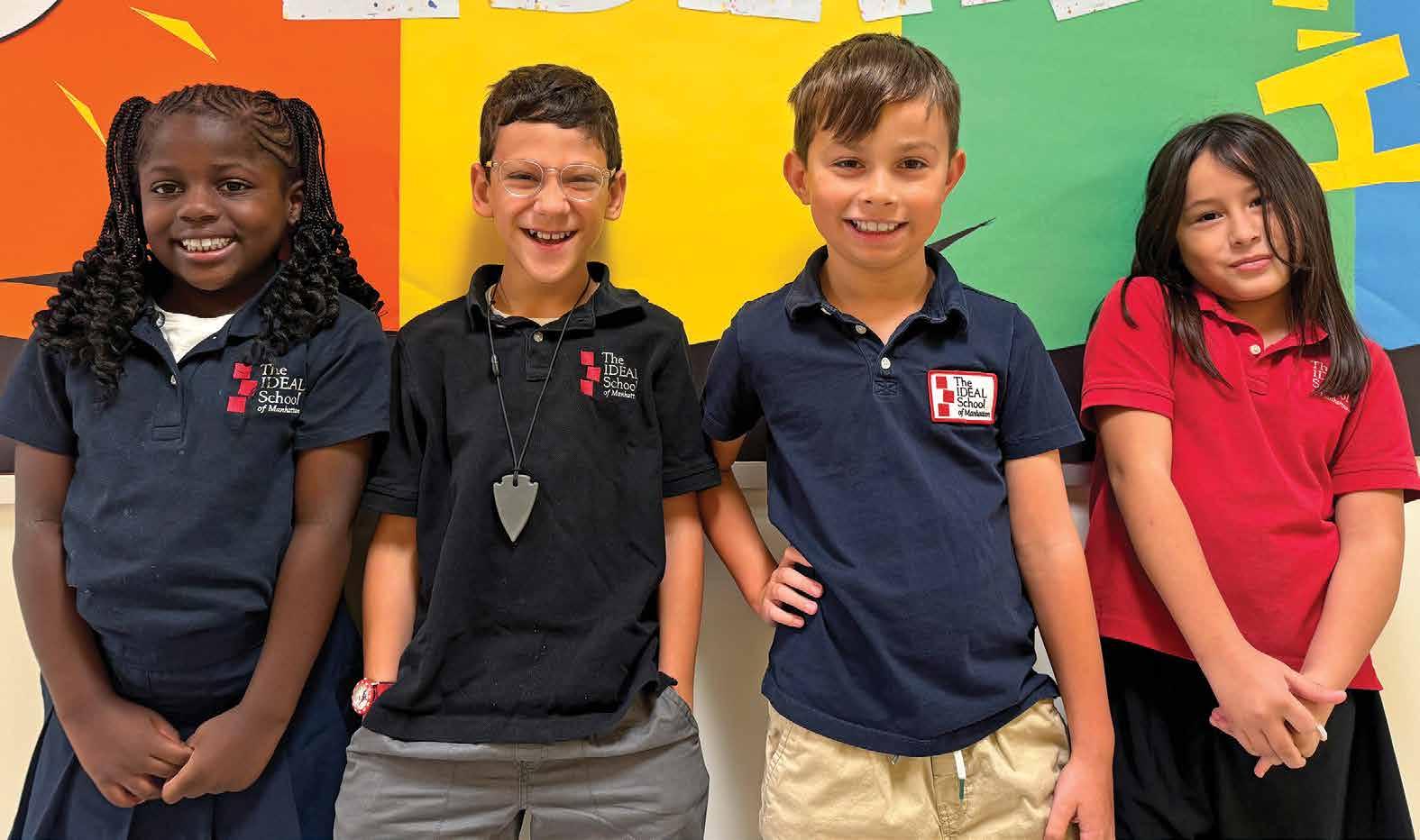
•
•
•
•
•
By New york Family
In a world of digital everything, one tradition that will almost always succeed in getting everyone’s faces out of their phones is family game night. It remains one of the few ways to guarantee live interaction between family members, spanning all ages, without an electronic aid of any sort (unless the game itself is electronic, but you see my point). And the middle of winter, when it’s too cold to go anywhere, is the best time for finding your family’s new favorite.
We’re sharing some of our own family’s favorite games this month, in case you are looking for some fresh ideas for your next game night.
Danielle Ramos Deputy Editor
My favorite family game isn’t one you can buy but it is one you can play. I’ve always been a big music lover, and my kids grew up with music playing in our home every day. Some songs move me so deeply that, without even thinking, I’d start talking about them while cooking dinner or lounging on the couch. I’d point out the lyrics that struck me and explain why I found them so interesting or their underlying meaning. Then, I’d ask my kids what they thought, and we’d end up talking and listening.
Before long, we started setting aside a specific time when we were all home to play a song together and discuss it. We’d pick themes, and everyone would choose a song to share. After playing it, we’d each take turns explaining what we thought the song was about, what a certain line meant or how it made us feel, and then the rest of us would weigh in. We called it “Lyrical Hour.”
Over time, it became something my kids looked forward to. They’d eagerly say, “I’ve got a song for Lyrical Hour—when are we doing it?” Over the years, we’ve had so many fun memories, plus we’ve each become obsessed with so many new bands and artists.
Jeannine Cintron
Editorial Director
When my kids were a lot younger, we used to do this thing called “pizza soda board game night.” These nights would often occur when their dad was working and it was just us three at home. The kids would each pick a game, inevitably arguing over which to play first, while I called in our usual large pie with pepperoni and a liter of Coke. We played a lot of games over the years but there are a few standouts, ones we would return to again and again. They are:
Kids Against Maturity- Fans of the adult game Cards Against Humanity will be familiar with the concept, as this is essentially the kids
version - and I daresay it’s equally as fun. To this day, there has never been a game that could make my kids laugh harder. Just be prepared for a lot of silly bathroom humor.
Ticket to Ride, Jr. - In this relatively fast-paced (read: short) board game, players compete by “building” railroad tracks across a map. The thing I love is that the rules are simple enough for younger kids to follow, but the concept is fun enough to keep all players entertained regardless of age. I have only played the kids version of this game, but I’m sure the older one is just as fun.
Monopoly Super Electronic Banking Board Game - If you’re still playing Monopoly with paper money, please stop. Even Mr. Monopoly has gone digital. In this game, a batteryoperated “credit card” machine stores each players’ assets, doing all of the math for you after everyone’s turn. Is it lazy? Maybe. Does it speed up the game to where it can actually end before everyone gets bored and gives up? Definitely. Added bonus? No one can cheat!
Thalia Fernandez
Senior Digital Editor
Family game night at my house consists of multiple games in rotation. We’ve got Uno (gets very serious in my house), Jenga (I’d recommend the set with the huge blocks), cards against humanity, and anything we can find online if we need to.
My partner and I have been all about nostalgic games lately, and in our homes growing up, our families played Dominoes. That’s the one pick I really recommend, especially if it’s something you grew up with. It’s become a staple for us when we spend a night inside with friends or during our weekly movie night. This pick may be specifically geared toward parents, but there’s something special about carrying on those traditions and making sure the next generation can see it live on. A lot of times, that’s their introduction to the game itself. Anytime we play Dominoes in front of little ones, they’re curious to know about the game, ask for instructions, and sit around and watch while we play. It’s exactly how we were introduced to Dominoes and what makes moments like that even more special.
Alexa Lutter Editorial Assistant
There are many words I can use to describe my family but when game night rolls around only one word comes to mind: competitive! There is nothing like family game nights in my house
as my sisters, my mom, and I all want that sweet taste of victory. We love playing all sorts of board games, but Clue is definitely our number-one pick. My family is really into mysteries, whether it’s in shows, movies, or, of course, board games. Clue is such a fun murder mystery game that gives us a chance to flex our pretend detective skills. The game has so many different elements and countless combinations for winning, it never gets old and keeps it as our all-time favorite.
Game nights with my family are truly something special to me. While we are so competitive, game nights also pack in so many great memories and waves of laughter. As my sisters and I have gotten older, our game nights have become less frequent, but we always make it a point to keep the competitive spirit alive by always playing games during the holidays.
Shara Levine
Event Editor
While I have a closet filled with games, on Friday nights it’s all about Ping Pong. As soon as my husband gets home, my four boys


quickly race to shout out who gets to go up against Daddy first. No one competes for a turn with me – and you would know why if you saw me play. I get it. Eventually someone does, but I know it’s out of pity and I gladly take it. When the first round starts, immediately someone will ask for winners and the games continue through the night. We’ve had this table for years and it keeps everyone entertained for hours every week.
Náosha Gregg
Digital Editor
My favorite family game night game is Monopoly. Growing up, my mom, brother, and I would play it religiously.I loved the autonomy the game provided me as a child. It helped me learn about money, property, profit, and loss and gave me a chance to be the bratty little sister whenever my brother landed on my property. Monopoly was a game of independence, which was very much my style as a kid. Monopoly was one of those games that brought us bonding time and helped us laugh and grow together as a family, and I will always cherish that.







By Danielle Ramos
Vaping is on the rise, especially among teens and young adults, and a recent survey has healthcare professionals sounding the alarm. According to a survey conducted for the New York State Quitline by the Roswell Park Comprehensive Cancer Center in Buffalo, NY, 64% of licensed healthcare providers in New York believe we’re facing a teen epidemic. The findings highlight the increasing use of e-cigarettes among young people, raising serious concerns about the present health of teens and the long-term effects of nicotine addiction.
This survey is part of a bigger effort by the NY Quitline to see how healthcare providers are dealing with tobacco use and figure out ways to improve support for people trying to quit. After all, healthcare professionals are on the frontlines and see just how many young people suffer the dire health consequences of using vapes.
Besides peer pressure, targeted marketing and flavored products also encourage kids and teens to start, although most middle and high school students who vape want to quit.
The survey results suggest that healthcare professionals are deeply worried about the growing trend. “Our latest survey results illustrated healthcare professionals’ concerns about a new generation of addiction to nontraditional tobacco products,” said Tony Astran, PR and communications manager for the NY Quitline.
The Centers for Disease Control (CDC) reports that young people use e-cigarettes, or vapes, more than any other tobacco product. Perhaps more surprising is the fact that many teens and young adults who have

never smoked a traditional cigarette are becoming hooked on nicotine through using vapes. Experts say that is just as addictive and harmful as smoking regular cigarettes.
No tobacco products, including e-cigarettes, are safe, especially for kids and teens. Most e-cigarettes contain nicotine, which is highly addictive and can damage the developing brain, affecting attention, learning, mood and impulse control.
E-cigarettes can also cause what is known as EVALI, or e-cigarette or vaping-associated lung injury that usually first shows up as shortness of breath, a cough, or chest pain. Yale Medicine reports that back in 2020, “the CDC recorded over 2800 hospitalizations due to EVALI along with 68 deaths caused by the condition.”
It’s important that pediatricians and other medical profssionals look for signs of vaping in young people, too. Pediatric pulmonologist Pnina Weiss, MD tells Yale Medicine, “I screen all of my patients, any child over age 12, since it can exacerbate underlying conditions like asthma.”
With the growing popularity of vaping, parents need to be on top of what’s happening. So, what can you do to help curb the dangerous trend? Here are a few tips:
Explain the danger and be open: Talk to your kids about the risks of vaping. Many teens think e-cigarettes are harmless, but it’s important to explain how addictive nicotine can be and the damage it can do to their lungs and brain.
Be aware: Vaping devices can be small and easy to hide, so it’s good to know what to look for. Pay attention to any changes in your child’s behavior that might suggest they’re vaping.
Spell out house rules: Make it clear that vaping isn’t allowed in your house. Establish rules and stick to them, so your kids know where you stand.
Keep them busy and engaged: Help your kids find other ways to handle stress like playing sports or creative hobbies like journaling, drawing, or playing music. Sometimes just hanging out with your teen and grabbing a meal or doing something together is a comforting distraction.
If you think your child is struggling with nicotine addiction, don’t hesitate to reach out for help. Speak to their doctor or consider if therapy with a licensed psychologist or counselor can help. The NY Quitline offers free, confidential support to anyone trying to quit.
For more information or to get support, visit nysmokefree.com or call 1-866-NYQUITS.






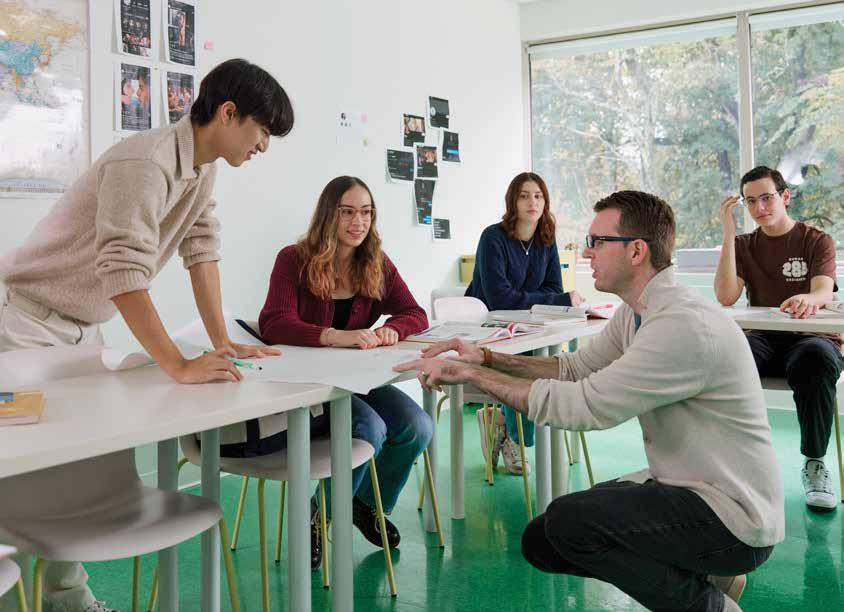

(that they will love!)
By Thalia Fernandez
According to the National Literacy Institute, data collected from 2022-2023 showed that approximately 40% of students nationwide cannot read at a basic level. Their data found that in the U.S. About 130 million adults cannot read a story to their children. In 2022, 21% of adults were considered illiterate, and 54% had a literacy level below 6th grade. Additionally, 45 million adults read below a 5th-grade level. A striking but not-so-striking statistic is that 44% of American adults do not read a single book in a year.
As a former teacher, data like this seems alarming, considering just how important it is for everyone to master reading and comprehension, no matter what age. However, part of the job was knowing that it is never too late to make a change, and every single person learns at their own pace and in their own way. Finding out what type of learner you are can make all the difference. There are visual learners, learners who need to see an example of what they’re learning, learners who prefer reading/writing, kinesthetic learners who prefer to engage with the material physically, and auditory learners who prefer to listen to the material they’re learning.
No learning style is better than the other; it’s all about what works best for you and your family. The great thing about living in our digital age is that there are little corners of the internet where parents, teachers, and learners can find tools that best fit every individual’s needs.
We millennials had Bill Nye the Science Guy, Goosebumps, pretty much anything on PBS, and tons of educational television that secretly taught us a lot growing up,
including literacy skills. Many of these classic shows taught us comprehension skills, enhanced our vocabulary, and helped us practice critical thinking, all while having fun and keeping us engaged. Today, kids actually have tons of options. If you’re looking to keep your kids engaged and off of social media apps, podcasts could be the way to go.
Podcasts could be great for kids or students of any age who are auditory learners. Many podcasts engage listeners with storytelling, which can help build critical literacy skills. Below is a list of podcasts to add to your children’s library in 2025 if you want to boost literacy skills this year and beyond.
Circle Round
Age Range: 3-10
Circle Round is an engaging weekly podcast designed specifically for children ages 3 to 10.
Each episode transforms traditional folktales from various cultures into captivating radio plays, lasting between 15 to 25 minutes. The stories highlight valuable themes such as kindness, generosity, and persistence, making them not only entertaining but also educational. Moreover, each episode concludes with a thoughtful activity that fosters meaningful conversations between children and adults.
Storynory
Age Range: 7-11
Storynory is an app that provides a diverse collection of audio stories for children, including classic fairy tales, legends, poems, and original narratives. Users have said they love the app for its engaging and entertaining content, with families noting that the friendly voice of the stories can help ease anxiety. Storynory can help with building listening and comprehension skills.
Age Range: 3-10
KidLit TV is a highly acclaimed platform that celebrates children’s literature through engaging readings and discussions led by talented authors and illustrators. Recognized with a Parents’ Choice Gold Award and nominated as a Best Digital Tool for Teaching and Learning by the American Association of School Librarians, KidLit TV stands out as an invaluable resource. Available in over 800,000 schools worldwide, it effectively inspires a love for reading among children. With a dedicated team of parents, educators, librarians, authors, illustrators, and filmmakers, KidLit TV offers innovative and enjoyable ways to engage young readers and enrich their literary experiences.
Age Range: 6-12
This podcast, recognized with a Webby Award nomination, delivers a captivating experience where kids ages 6-12 team up with authors to craft original short stories inspired by the children’s ideas. The Story








Seeds Podcast is a one-of-a-kind approach to storytelling and creates a space for children to craft an engaging story that puts their interests and imagination first. Families can tune in and build literacy skills through its engaging narratives, meaningful content, and a diverse array of voices and characters.
Age Range: 4-10
In this fun and quirky podcast, children have the opportunity to submit their most intriguing “what if” questions, which serve as the inspiration for the host’s creative storytelling. Each episode transforms these imaginative prompts into captivating tales filled with delightful characters and surprising twists. This format not only entertains young listeners but also encourages them to develop their listening skills and critical thinking abilities as they explore the possibilities of each scenario.
Brains On!
Age Range: 6-12
Brains On! is an exciting science podcast for kids. Each week, a different child joins host






Molly Bloom to ask interesting questions about the world. The podcast aims to inspire young minds by discussing science and history. With over 100 episodes available, listeners can easily find popular episodes to start with. This podcast is a great way for parents and kids to explore and enjoy the wonders of science together.
Age Range: 6+
Rebel Girls is a global empowerment brand that aims to cultivate a confident and inspired generation of girls. By championing the belief that girls can and should dream big, the brand showcases the stories of extraordinary women from history, demonstrating how these narratives can foster equality and inspire young minds. Through engaging storytelling, Rebel Girls not only captivates children but also aids in developing their literacy skills, encouraging them to see the limitless possibilities that lie ahead. The Rebel Girls podcast brings the adventures of inspiring women to kids in an audio format that’s engaging and empowering.
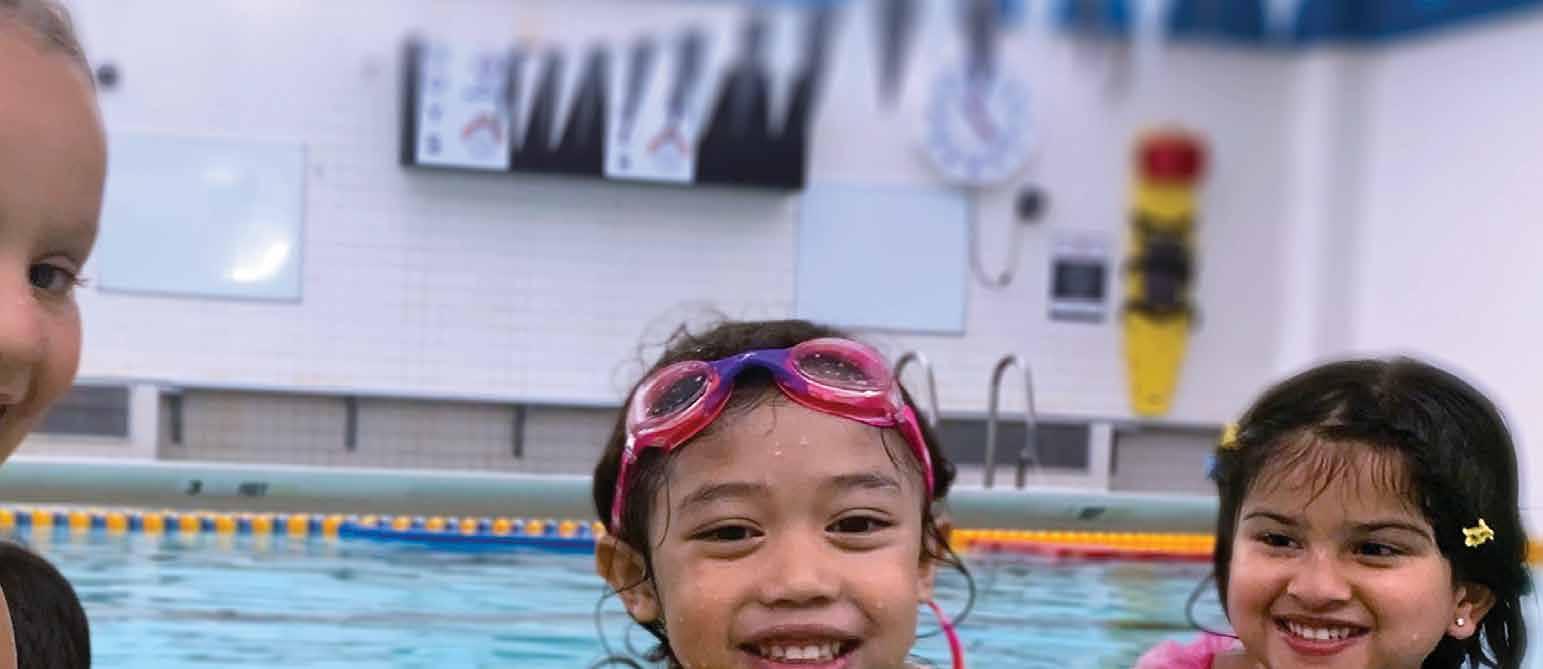









By New york Family
New York is a vibrant place renowned for its diversity and opportunities. It is also home to one of the largest public school systems in the country. However, many parents find themselves exploring alternatives to public education for their children. The decision to explore alternatives to New York public schools is a personal and often complex one. Parents weigh factors like academic quality, safety, and alignment with their family’s values alongside logistical and financial considerations. While the city’s public school system serves many students well, the diverse range of alternatives ensures that families can find an option that best meets their children’s unique needs and aspirations.
We’ve outlined some of the most common reasons many New York families are choosing to explore alternatives to a classic public school education below.
One of the most common concerns parents express about public schools is the quality of education. While many public schools in New York offer excellent programs and dedicated teachers, others struggle with overcrowded classrooms and limited resources. According to the New York City Department of Education, some schools face student-toteacher ratios that make individualized attention challenging. For parents seeking a more tailored academic experience, private schools, charter schools, and homeschooling often become attractive alternatives.
Safety is a significant factor influencing parents’ choices. In a city as dynamic as New York, concerns about bullying, physical safety, and overall school environment weigh heavily on many families. Parents often look for schools with smaller communities,

stricter disciplinary policies, or specialized programs that address social-emotional learning to ensure their children feel secure and supported.
For children with special needs or those who excel in specific areas like arts, sciences, or athletics, public schools may not always offer the depth of programming required. Specialized private schools, magnet schools, and some charter schools provide tailored curricula designed to nurture unique talents or support diverse learning styles. These options can be game-changers for families seeking a more customized approach to education.
New York City’s diversity extends to its range of educational philosophies and cultural or religious practices. Many families choose parochial schools or other faith-based institutions to provide their children with an education that aligns with their values and beliefs. Similarly, schools emphasizing bilingual education or specific cultural perspectives can appeal to families wishing to preserve their heritage or cultivate global awareness.
Charter schools and independent private
schools often serve as incubators for innovative educational practices. These schools may offer project-based learning, alternative grading systems, or STEM-focused programs that cater to the evolving demands of the modern world. For parents who value creativity and flexibility in education, these alternatives can be particularly appealing.
While many public schools in New York boast impressive extracurricular offerings, budget constraints and disparities among schools can limit availability. Private schools and some charter schools often have more robust funding for arts programs, sports, and other enrichment opportunities. Parents who prioritize a well-rounded education frequently consider these factors when making their decisions.
For families living in neighborhoods with underperforming public schools, proximity can also play a role. Rather than navigating long commutes to access a high-quality public school, parents may opt for nearby private or charter schools that provide an equally strong or better educational experience.


















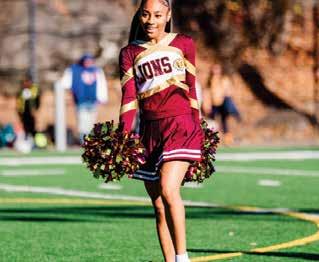




Capital Preparatory Harlem Charter School
2041 Madison Ave., Manhattan 212-328-9370
capitalprepharlem.org info@capitalprepharlem.org
Capital Prep Harlem is a public, tuition-free charter school providing children grades 6-12 with a rigorous college preparatory education with a social justice lens. Capital Prep’s mission is to equip scholars with the college and career readiness skills to succeed in college and beyond, and exists to change the narrative that a child’s race, zip code, or socio-economic status defines their capacity to achieve. 100% of Capital Prep graduates have been accepted to 4-year colleges.
East Harlem Scholars Academy
2050 2nd Ave., Manhattan 212-897-2897 ext. 2304
East Harlem Scholars Academy II 1573 Madison Ave., Manhattan 212-348-2518
East Harlem Scholars Academy High School 2017 First Ave., Manhattan 212-897-2898
EastHarlemScholars.org enrollment@ eastharlemscholars.org
East Harlem Scholars Academy schools prepare students with the academic skills, character, and emotional well-being to excel in high school, college, and beyond. Operated by East Harlem Tutorial Program (EHTP), a communitybased organization that has provided educational opportunities since 1958, Scholars Academies foster a culture of learning, kindness, and respect. Using responsive classroom techniques and restorative practices, the schools create joyful, academically



challenging environments where children feel safe and valued.
Locations across Bronx, Brooklyn, and Manhattan 929-822-4430 kippnyc.org enroll@kippnyc.org
KIPP NYC operates 18 public charter schools across the Bronx, Brooklyn, and Manhattan, serving over 9,000 K–12 students. With a rich blend of engaging and challenging academics, co-curricular activities, sports, and social-emotional support, the K–12+ model offers comprehensive support from kindergarten through college, career and beyond.
WHIN Music Community Charter School
528 West 162nd Street, Manhattan
646-970-4815 whinmusic.org office@whinmusic.org
WHIN Music Community Charter School is built on the principles of El Sistema where staff, families, and students work together to ensure every child reaches their full potential. Serving students K - 8, the school makes academics a priority while also ensuring students’ character and socialemotional growth. With music at the school’s core, students work together to create something bigger than their individual skills, and this approach extends to their classrooms where project-based, hands-on learning cultivates curious, creative, and hardworking children.
Williamsburg Charter High School
198 Varet St., Brooklyn 347-217-6995













thewcs.org admissions@thewcs.org
WCHS unites youth, families, staff, teachers and the community at large in providing young people with the tools necessary to become citizens of the local and global community. Students at WCHS accomplish this through participation in a liberal arts education that includes language, literature, writing, science, history, mathematics, the visual and performing arts, technology and explorations in justice, independent thinking, respect and compassion for themselves and others as well as critical thinking, communication and research.
Zeta Charter Schools
Zeta Inwood Elementary School: 401 West 218th St., Manhattan
Zeta Manhattan Middle School: 401 West 218th Street, Manhattan zetaschools.org
Zeta combines a caring, whole-child approach and world-class academics with unrivaled opportunities for students to discover their passions through art, dance, chess, debate, music, robotics, sports, and Taekwondo. Zeta’s next-generation approach to learning helps students develop the confidence, awareness, and knowledge to solve challenging realworld problems, preparing them for access and leadership in an evolving modern world. Zeta will serve children from Pre-K through 8th grade for the 2025-26 school year, growing to eventually serve students through 12th grade.



528 West 162nd Street New York, NY 10032
646-970-4815
By Danielle Ramos
If it feels like everyone you know is either sick or on the verge of coming down with something, you’re not imagining it. There are sick kids and consequently, sick adults all over. Flu cases are spiking in New York, there’s a major norovirus outbreak, and RSV is also making its rounds. And let’s not forget the growing concern over bird flu cases. With all these germs circulating, it’s no wonder colds and illnesses seem to be everywhere this winter.
For parents, this means more days at home with sick kids—days that can quickly feel long and overwhelming. Keeping them entertained and comforted while they rest can be a challenge, especially when you’re sick yourself. To help you navigate this germy season, here are 4 ways to keep your sick child engaged and content while they recover, and make some good memories along the way.
When you’re dealing with a scratchy throat and constant coughing, talking might be the last thing you want to do. But pulling out a box of crayons and some coloring books can be a perfect way to pass the time. Not only does it keep your kids calm, but it also keeps their minds active while their bodies focus on healing. Some of my fondest memories from childhood were those quiet afternoons when my mom would come home early from work, sit beside me, and color together. It’s a simple but meaningful way to connect during a sick day.
For an added personal touch, don’t forget to sign and date the pages you work on. It’s a small gesture that can turn a sick day into a lasting memory.
Watch Old Sitcoms
A couple of years ago, my son and I both had COVID over Christmas, which completely wiped out our holiday plans. Stuck at home and unable to do much else, we ended up

watching nearly everything on TV. When we ran out of shows to stream, I decided to turn on Three’s Company—a nostalgic favorite of mine. As I relived all the hilarious moments with Jack Tripper, my son started laughing. Pretty soon, he wanted to watch more. By the end of the week, we’d gotten through quite a few episodes, and he was a genuine fan!
For younger kids (and even some older ones), nothing beats a good SpongeBob or Bluey marathon. It’s a guaranteed way to keep them entertained while they rest, and you might even find yourself chuckling along at the antics in Bikini Bottom.
Crochet, Make Art, and Do Crafts
For a quieter, more creative way to pass the time with sick kids, try doing crafts together. If your child enjoys drawing, a sketch pad and some charcoal pencils can help take their mind off being sick while allowing them to express themselves. If you’re both feeling well enough, it could be a great opportunity
to teach your child a new skill, like crochet or knitting. Not only will this keep them engaged during their recovery, but it’s a relaxing activity they can continue once they’re back to full health. Plus, creating something with your hands can be a soothing way to unwind and bond during a sick day.
Read Together
Even if your child is old enough to read on their own, being read to when they’re feeling sick can be incredibly comforting and soothing. The familiar voice of a parent and the distraction of a good story can make a difference. For added comfort, consider reading a book about half an hour after your child takes their medication. This can create a calming routine that helps them settle down for a much-needed nap, and, hopefully, gives you a chance to rest as well. Whether it’s a favorite story or a new adventure, reading together is a quiet, memorable way to bond while your child recovers.
















BY JESS MICHAELS
Deciding to send your child to summer camp for the first time is exciting! However, for many families, the search for a camp can be overwhelming. Here are some tips to help you begin your camp search and narrow down the options to find the right camp for your child.
Consider your child.
Before you even begin to look at camps, the first step is to take the time to really think about who your child is. Having a true understanding of your child’s temperament, interests and needs will help you focus on which camps can provide the best experience for who your child is. Often, parents can get caught up in wanting to know what the “best” camp is. The best camp is the one that is the right fit for your child!
Ask yourself: How should your child’s camp experience look?
Think about what your goal for the camp experience is for your child. There are many different camp programs and figuring out exactly what you want your child to gain from camp will help you narrow down the choices. Are you looking for your child to build community, develop skills in a specific sport or discover new interests by participating in various activities? Do you feel your child will thrive in a smaller or larger environment? Are you looking for a full summer experience or just a few weeks? Are there certain aspects of camp that fall into a “must have” category? Thinking about these camp aspects will help narrow down the options.
Talk to friends.
Speaking with friends about the camps their children go to is a great first step to learning about others’ experiences. Keep in mind that each family is different and what one family values in a camp may be different than what is best for your family. Make sure to do your









own research to find what feels right for your child, not just what works for someone else.
Go to camp fairs.
Visiting a camp fair gives families the opportunity to learn about various camp programs all within a few hours. Each camp has a table and a member of the camp’s team is there to discuss the camp and answer any questions you may have.
Schedule a call with the director. One of the most important steps in learning about a camp and whether it would be a good fit for your child is to schedule a call with the director or a member of the camp’s leadership team. Ask about the camp’s philosophy and what the camp program is. Also, describe who your child is (the positives and the flaws) and ask what type of child is successful at the camp. You should get a good sense from this call about what the culture of the camp is and if it sounds like a good match. You also want to make sure that you click with the camp director. You are forming a partnership with the camp leadership team and you need to feel comfortable with who they are and the decisions they make at camp that will affect your child.
Attend camp tours.
Touring a day or overnight camp when a camp is in session is one of the best ways to get a feel for a camp. You can see activities in action, what a bunk looks like full of camper’s things, and
watch the interactions between staff and campers. You are also able to ask questions in realtime. If you are interested in touring a camp, it is best to have an initial phone call before scheduling your tour to see if the camp could be a good fit. This will save you a lot of time and allow you to tour just the camps that feel like they may be good for your child. Keep in mind that day camps tour all year long and many overnight camps host fall and spring events at their camps so if you cannot tour during the summer, there are other opportunities to see a camp.
Do virtual tours.
Virtual tours are another great way to check out a camp, if they are available. If you were unable to tour or you did tour and wanted to hone in on certain areas of the camp, virtual tours on a camp’s website give an excellent view of what areas of the camp look like. This way families can see different parts of the camp without even leaving home.
Call the American Camp Association, NY, and NJ. Families can call the American Camp Association, NY, and NJ for free, one-on-one advice in finding a camp. ACA, NY, and NJ’s dedicated camper placement specialist Renee Flax will listen to what you are looking for and learn about who your child is. She will then send you personalized recommendations based on the conversation you had. Renee can be reached at 212-391-5208 or renee@acanynj.org.
BY JESS MICHAELS
There is nothing like a summer spent at camp for the chance to try new activities, make new friends, practice independence and gain confidence. There are so many wonderful aspects to the summer camp experience — including some things you may not know! Here are just a few of them:
It’s never too late.
There is a misconception that if your child doesn’t start camp at a young age, they have missed the chance and they are too old to start. This is simply not true. Children can begin a day or overnight camp at any age but it’s important to find a camp where your child will assimilate well and feel part of the community easily. Having open conversations with the camp leadership about how long the camp group has been together and if your child would fit in nicely is important when starting a camp as an older camper. Many day camps have programs geared for older campers with day travel programs, and elective and session overnight camps tend to get campers who start at an older age.
It’s okay if you don’t know anyone! While it may feel comforting to go to camp with a friend, it isn’t necessary and can also sometimes backfire. Camp is all about forming new friendships and camp professionals are pros in helping campers forge friendships starting on day one! Camp is built for children to talk around the table at meals, laugh during silly games, and bond over shared traditions so friendships form easily. When a child goes to camp with a friend, there is the chance they will have different friends, putting a strain on that friendship back home. Or the friends that come from home together just stick together and don’t branch out to form new friendships. Camp directors are happy to connect future campers with other new campers so there is a familiar face on day one of camp. They also do new camper get-togethers where children have a chance to


meet other campers before camp begins.
Before and after care is available. Many day camps offer before and after care for working families, extending the camp day so that a day spent at camp can double as childcare. Families can pay an extra fee to have their campers begin and/or end camp later to give working families a longer day.
Mental health is a priority. Camp professionals know that children don’t leave problems at home when they board the bus for camp. An issue may also occur at camp that needs to be addressed as well. Many overnight camps have mental health professionals on staff or on call for both campers and staff to help young people while away from home. It’s important for families to be open and honest with the camp director ahead of camp about what your child’s mental health needs are and to ask what kind of support is offered at camp. Many parents are also likely not aware that there is no need for campers give up summer therapy appointments. If your child sees a therapist and would like to continue during the camp season, campers can schedule Zoom calls or phone calls from camp to keep up with their appointments.
Kids with food allergies are welcome.
If your child has a food allergy, there is a

camp that can accommodate them. When researching camp, discussing your child’s food allergy should be at the top of the list. It’s important to make sure you and the camp’s leadership team are on the same page with keeping your child safe at camp. Having specific conversations with the camp leadership team about food allergy protocols, who is the point person for managing food allergies, and how you can work together to create a plan for managing your child’s allergy are all important steps toward a safe summer for your child.
Financial aid is available.
Parents certainly need to consider their family’s budget when considering camp for their child. There really is a camp for every budget, and nonprofit summer camps offer financial aid, scholarships, and sliding scales. When looking for financial assistance, it’s always best to inquire as early as possible.
Tutoring can continue through the summer.
If your child needs to keep up with school work during the summer, many day or overnight camps will offer tutoring so your child doesn’t fall behind. For children having a Bar or Bat Mitzvah shortly after summer camp, they are able to schedule calls with their mitzvah tutors so they are able to keep up with their religious studies during the summer months.
Sending kids to day camp is one of the best ways to give them a summer full of fun, growth, and unforgettable memories. Day camp provides a unique opportunity for children to build confidence, make new friends, and explore their interests in a safe and supportive environment where they can go home at the end of the day. Whether they’re trying something new or deepening a passion they already love, the day camp experience is about more than just filling the days—it’s about fostering independence, creativity, and resilience. It’s a summer adventure that kids will carry with them long after the season ends. In the heart of the city that never sleeps, Manhattan’s day camps are buzzing with excitement. Discover how Manhattan’s programs combine fun, enrichment, and the energy of the city for an unforgettable summer.


Chelsea Piers Field House Manhattan
62 Chelsea Piers, Manhattan 212-336-6500 chelseapiers.com
Chelsea Piers offers dynamic summer camp programs for children ages 3 to 17 in Manhattan. These camps provide a variety of sports and activities designed to keep children active, engaged, and entertained throughout the summer. Located on the Hudson River, this campus features state-of-the-art facilities offering programs in gymnastics, ice skating/hockey, parkour, soccer, golf, and more. Programs are tailored for various age groups, from preschoolers to high schoolers, ensuring age-appropriate activities and instruction. Weekly enrollment options are available to accommodate family schedules. Registration for the 2025 summer camp season is open. Enroll early and save!

Creative Arts and Sports
268 Mulberry St., Manhattan 646-344-1070, info@creativeartsandsports.com creativeartsandsports.com
Creative Arts and Sports offers an exciting Summer Day Camp at their Soho/Lower East Side location, where basketball takes center court! Kids will enhance their skills through drills, games, and friendly competition, all while building teamwork and confidence. The camp runs from mid-June through the end of July, with flexible enrollment options for one week or day-by-day participation. In August, a special 3-week basketball day camp in Southampton provides young athletes with the chance to elevate their game. The camp offers a high-energy, basketball-focused experience. Every day is a slam dunk, with skill development, sportsmanship, and tons of fun on the court!

Locations throughout Manhattan nykidsclub.com
Camp Kids Club is designed for children aged 2.5 to 6 years, providing a dynamic blend of STEM, gym, dance, and art activities. With flexible enrollment options ranging from single-day drop-ins to the full summer season, and schedule choices of 9 am–12 pm, 9 am–4 pm, or 9 am–6 pm (at select locations), it runs from June 2 to August 31 across 17 convenient locations throughout Manhattan, Brooklyn, and Queens. For older children aged 5 to 8, Explorer Camps offer week-long adventures in Parkour or Dance, fostering creativity and a love for learning. These camps are available at select locations during the summer, with sessions running fro 9am to 12pm. Both camps provide a safe, nurturing environment where children can develop new skills, build confidence, and make lasting memories.

Play On! Studios
263 West 86th St., Manhattan 347-709-4149, info@playonstudios.com playonstudios.com
Play On! Studios offers theater day camps on the Upper West Side that are guaranteed to give kids a summer full of acting, music, and fun they won’t soon forget! Young actors will rehearse and perform in a full production, work with professional NYC actors/ teaching artists, build up their skills in a nurturing, non-competitive environment and play lots of drama games! A welcoming camp atmosphere is perfect for beginners and also more experienced actors. Creative Drama Camps are perfect for kids entering grades K-4, and multi-week Musical Theater Camps are aimed at kids entering grades 4-9. Sign up for one week or more - there’s a new show every session! Spots are limited, so sign up today.
Oasis Day Camp Central Park 795 Columbus Ave., Manhattan 914-712-5054, centralpark@oasischildren.com oasischildren.com/central-park
Oasis Day Camp is for ages 3 to 10th grade, offering a traditional camp experience—in Central Park! This dedicated team of educators is committed to engaging activities, safe environment, emotional development/self-esteem, resilience, and vital life skills.Early Start Imagination Camp-(3yrs-K) is your child’s introduction to new experiences and making friends, with specialized care by experienced professionals and developmentally appropriate activities. Lower Camp (grades K, 1 and 2) includes funfilled days of adventure/ exploration with sports, art, music, swimming, enrichment and nature. Upper Camp (3rd5th grade) offers variety for growing interests; activities include basketball, soccer, flag football, swimming, nature/adventure, painting, theater and crafts. Travel Camp (6th-10th grade) are available for older campers with trips to theme parks, museums, Broadway shows, sporting events and overnights.


Rella’s German Summer Camp
50 West 97th Street, 1-D 646-837-6777, Summercamps@rellasspielhaus.com rellasspielhaus.com
Rella’s German Summer Camp is New York’s premier German Summer Day Camp, located on The UWS. The camp team is excited to be back for the 11th summer in a row.Kids 1-12yrs, any level of German welcome, no potty training required. Rella parents say “the team lead by Barbara genuinely cares and if you would see the level of thought and attention to detail, they put in each week is incredible. The kids spend so much time outside, are active and come back home happy and excited… couldn’t ask for more.” Call today, wir freuen uns!
Steve & Kate’s Camp
Manhattan Locations in UES, UWS, Kips Bay, West Village: Trevor Day School - Upper School, 312 E 95th St.
Trevor Day School - Lower School, 1 W 88th St.
United Nations International School, 24-50 FDR Dr Academy of St. Joseph, 111 Washington Place steveandkatescamp.com
Since 1980 Steve & Kate’s Camp has trusted kids to choose their own activities and plan their own days in real-time. Whether campers are designing, building, coding, creating, baking, dancing, playing, eating, sewing, skipping—it’s all on their own schedule. When you empower children to make their own choices and be their own bosses, they discover new reserves of confidence, resiliency, and creativity–all while learning to make course corrections and trust themselves as they go. Families can buy as many days as they’d like, and use them at any time. No weekly reservations or commitments required–just show up! If for any reason your plans change, the camp wlll automatically refund any unused passes in full at summer’s end. Open to ages 4-12. Lunch, snacks, and all hours (8am–6pm) are included.

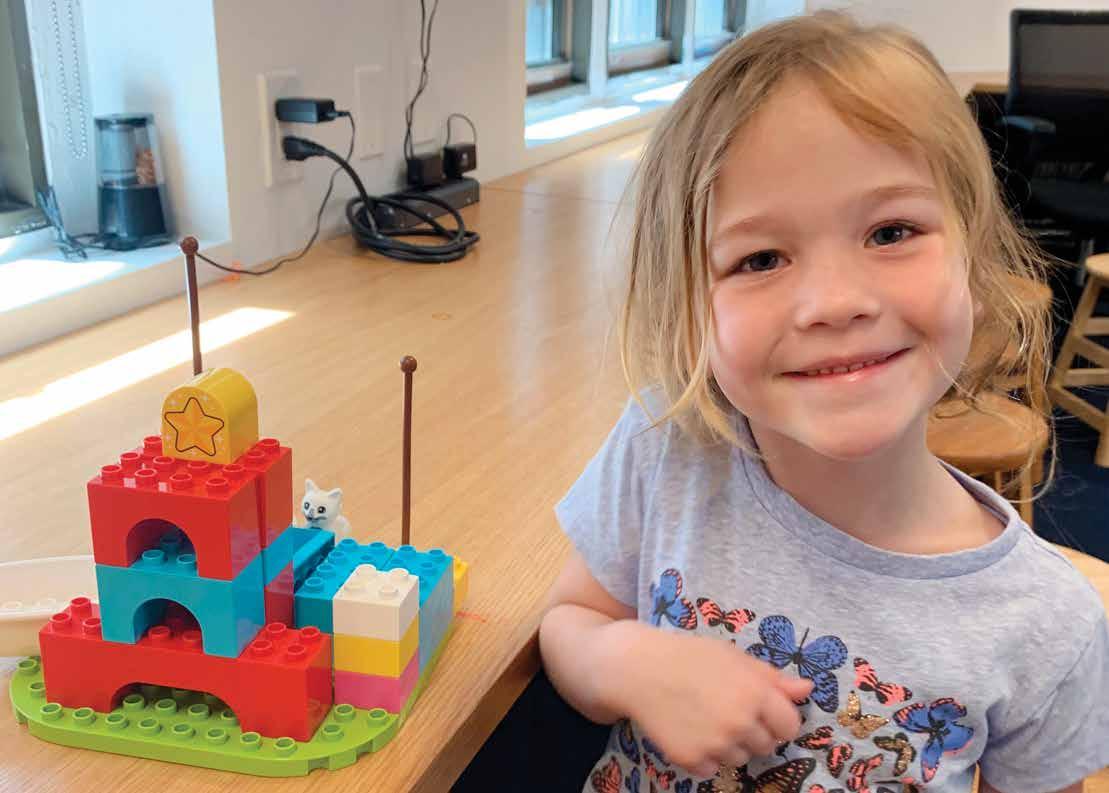
Trinity Discovery Day Camp 139 W. 91st St., Manhattan 212-932-6849, seth.goldberg@trinityschoolnyc.org trinityschoolnyc.org/our-programs/summer-camp
The Trinity Discovery Day Camp provides an opportunity for campers to be kids again. Campers get to engage with each other while swimming, playing tennis, chess, golf and much more. They also will have pool parties on Fridays and, of course, ices everyday! Five weeklong sessions are available between June 16 and July 18.

















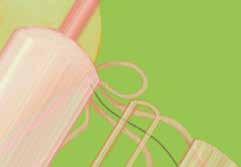






















Uncovering
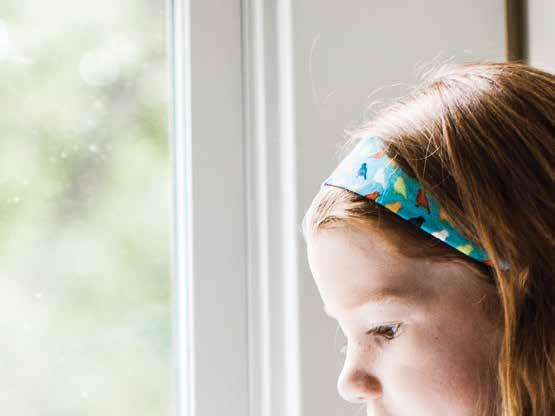
the truth about this controversial education trend
By Danielle Ramos
Deciding what school your child will attend can be overwhelming, especially since the options in New York City are so vast. While the emphasis often focuses on the school with the best teachers, test scores, and programs in your area, some parents opt to skip school altogether and homeschool. Still, others decide they want to unschool their kids.
Unschooling is a hot topic as many parents and educators have been openly sharing their views on social media. TikTok has become a haven for both opposing sides of unschooling to assert their stance. While parents all over are weighing in, there are certain misconceptions about this controversial topic.
Homeschooling 101
Haven’t heard of unschooling? You’re not alone. To understand unschooling, you first have to learn how homeschooling works. According to the Empire Center for Public Policy, the number of students who are homeschooled in New York State has increased by 178 percent over the past ten years. Though the pandemic was responsible for a large increase, numbers remain higher post-pandemic. While Washington DC leads the country in having the most homeschooled students, New York ranks second. There are approximately 54,000 homeschooling students in the state and 14,000 in New York City alone.
In New York State, any parent can homeschool their child. However, there are several legal standards that must be instituted prior to beginning. For example, you must submit a letter of intent stating that you will educate your child at home. Then you have to send a detailed Individualized Home Instruction Plan (IHIP) outlining your instruction course.
Over the school year, you have to submit regular assessments and quarterly reports of your child’s progress in your chosen course of instruction. As a parent, you can teach your child yourself, even without having any





formal teaching education. You can also opt to hire a tutor to come into your home, join a homeschool group, or sign up your child for an online school where they learn from a teacher online. Some are choosing to unschool.
Although unschooling is also done outside of a formal school, almost everything else about it differs from typical homeschooling. The term unschooling was coined by John Holt, an educator in the 50s, who believed that children didn’t have to be forced to learn as they would naturally learn independently if given the chance. The idea is that children direct their own learning by seeking out what they are interested in without the limitations of tests, assessments, and rank.
Parents who choose unschooling often do so to help their children avoid the pressures of conformity in a classroom. They want their kids to think independently and explore the world in their own unique ways.
Consequently, unschooling doesn’t adhere to a fixed curriculum. Unlike homeschoolers who often follow a schoolbased curriculum, books and study materials are not a must for unschoolers. Instead, the focus is on everyday learning and allowing children to learn based on their interests. For example, if a grade-schooler expresses


curiosity about birds, flowers, or drawing, a parent might seize this moment to foster that interest. They could provide books, visit a botanical garden, attend an art show, or go to a museum, or they might simply share their own knowledge on the topic. The key is to encourage exploration and learning in a way that feels natural and engaging while following the child’s lead.
However, parents who want to unschool still need to find a way to fill out the necessary paperwork and outline what they will teach. Some unschooling websites provide tips and advise parents to simply consider what their child did during the summer and use that as a basis to formulate their upcoming course plans. There are also subreddits offering advice on how to produce the necessary paperwork without following a formal curriculum.
One problem that can arise in this free and open educational zone is that there is no set system for children to learn necessary skills like math or reading at age-appropriate levels. Parents may wonder what will happen if the child never shows an interest in adding, doing division, history, or reading. Consider how many things we had to learn in school that we initially had no interest in but grew to understand and appreciate, often lessons that
propelled us to the next grade level.
Some critics argue that unschooling is merely parenting disguised as teaching. The line of thinking is that when we are with our kids, they often ask questions about the world around them, and we strive to provide answers. But is that sufficient for an education?
Many unschooling families view everyday activities, like going to the doctor or grocery shopping, as opportunities for learning. They use the outing to teach their children about colors during a drive, explain what doctors do, or show them how to budget for groceries—essential life skills learned through regular experiences typically reserved for after-school or weekend activities.
Another possible pitfall is that children who do not follow a set curriculum may not be up to speed with their grade level, and parents may not know it. A child also won’t be assessed for learning disabilities, including dyslexia, language processing disorder, and visual or auditory processing issues which make learning math difficult. When caught
early, these learning disabilities can be promptly addressed with professional support and early intervention.
That being said, there are many who believe that unschooling can produce positive outcomes. Gina Riley, Ph.D., an educational psychologist, Clinical Professor, and Program Leader of the Adolescent Special Education Program at Hunter College is a lifelong unschooling parent. In a podcast episode of “Honey, I’m Homeschooling The Kids,” Dr. Riley shares that her son’s first day of school was his first day of college.
Dr. Riley strongly believes in the power of intrinsic motivation and considers learning how to learn one of the most valuable skills a person can develop in life. She admits there are not a lot of studies on how unschoolers learn high-level subjects like math but says that math is a large part of life such as budgeting and shopping. When it comes to higher-level math she says there are unschoolers who show a marked interest and
teach themselves algebra and calculus simply because they love numbers. At the same time, Dr. Riley points out that there is also a good portion of traditional school students who are math anxious and struggle, despite being in a formal classroom setting.
As a mom, Dr. Riley says that she wasn’t always forthcoming about her son’s unschooling journey, especially considering her background in education. However, she found that this educational approach allowed her son to thrive. He explored geology as a young child and later developed a passion for both sports and guitar. Now, as an adult, he is an editor and founder of a music education business.
Ultimately, educating a child is a deeply personal decision. Some children will thrive, while others may face challenges, regardless of the educational approach. The key is to do your research on various learning methods and discover what resonates best for both you and your child. Of course, as your child grows, you can always pivot and make changes to ensure they have the best possible learning experience each year.



By Danielle Ramos
For many teens, getting a driver’s license is a right of passage. Teens who live outside the city often rely on a drive to get where they need to go, and even though city kids tend to take public transportation more than drive, passing a road test is still a milestone.
For many teens, failing their driver’s test can feel like the end of the world. The excitement of finally being able to drive turns into frustration, disappointment, and maybe even a little embarrassment. The truth is that learning to drive and passing the test can be tough for many, and sometimes it just takes a little extra time and practice.
Uber’s new Uber Teen Accounts offer a unique solution to help ease the blow of not passing the driving test and it’s designed to keep teens feeling independent, even when they’re
not behind the wheel.
To make life a little easier for teens who don’t pass their driver’s test, Uber is offering a month of free rides to teens with Uber Teen Accounts. This means that if your teen fails their test, they can get a month of free rides. The offer is good for up to six rides, with a maximum of $20 per ride.
This is an especially helpful option for outer borough or suburban parents, who may find themselves juggling multiple schedules and trying to fit in time to drive their teen around. Uber’s offer helps your teen get to where they need to go and hopefully helps reduce the blow of failing the road test a little bit.
“We know being a teenager is hard enough, especially if your driver’s test doesn’t go as planned,” says Georgie Jeffreys, Head of Marketing at Uber North America. “Whether it’s a ride home from school or to the mall with
friends, we’re making it easier for teens to stay mobile and independent until they can get back on the road.”
For parents whose kids regularly use Uber, the Uber Teen Account program can give them peace of mind knowing that their teen is using a service with built-in safety features, including ride tracking, real-time updates, and a clear record of all trips taken. It can also help your teen feel a little less trapped and on the spot while they prepare for their next road test.
To unlock the free rides, parents or teens can sign into the Uber app or visit uber.com/ teenrides. From there, you’ll be prompted to enter some basic information. You’ll also need to include which portion of the driver’s test your teen failed and why.
To qualify, your teen must have an active Uber Teen Account. If they don’t have one already, setting one up is free. The promotion is limited to six rides, with a maximum of $20 per ride. The offer is slated to run through March 31, 2025, or until all offers have been redeemed.

BY SHARA LEVINE
Color Our World: Women Who Made Waves!
WHEN: Feb. 4-28, Tuesdays – Sundays, 10 am – 5 pm, through Feb. 28.
WHERE: Children’s Museum of Manhattan, 212 W 83rd St., Upper West Side
AGES: 8 and younger
WHAT: Explore a new aspect of art and innovation with Black pioneering women who transformed their fields.
WANT TO GO?: Included with admission: $14-$17. (212) 721–1223, cmom.org
Kindie Rock
WHEN: Wednesdays, 10 – 10:45 am, through March 26.
WHERE: 6 River Terrace, 6 River Terrace, Battery Park City
AGES: 4 and younger
WHAT: A fantastic roster of Kindie Rock performers lead families with little ones in rocking sing-a-longs.
WANT TO GO?: Free. (212) 417–2000, bpca.ny.gov
Cirque-Tacular presents “Shimmer”
WHEN: Saturday, Feb. 8, 3 pm
WHERE: BMCC Tribeca PAC, 199 Chambers St., Tribeca
AGES: All
WHAT: Astonishing acrobatics, dazzling specialty acts, and glittering costumes abound in this “cool”, warm and whimsical world of Shimmer!
WANT TO GO?: $40. (212) 220–1459, tribecapac.org
Broadway Playhouse: Kids On Stage
WHEN: Sunday, Feb. 9, 11 am – 12 pm
WHERE: Merkin Concert Hall at Kaufman Music Center, 129 W. 67th St., Upper West Side
AGES: 4 – 11
WHAT: Introduce kids to

musicals in which a child is the main character, including Peter Pan, Annie and Oliver! Kids can sing along to classic numbers and play games as they learn.
WANT TO GO?: $25. kaufmanmusiccenter.org
Family Concert: Birds of a Feather
WHEN: Sunday, Feb. 9, 11:30 am – 12:30 pm
WHERE: The Jewish Museum, 1109 5th Ave., Upper East Side AGES: 2 – 7
WHAT: Family music superduo, Birds of a Feather, performs tunes you’ll want to dance to including nature inspired ones for the upcoming holiday of Tu B’Shevat (birthday of the trees).
WANT TO GO?: $18; free for ages 18 and younger (212) 423–3200, thejewishmuseum.org
Family Festival: Another World
WHEN: Feb. 15-19, Saturday-
Wednesday, 10 am – 4 pm
WHERE: Museum of Modern Art, 11 West 53rd St., Upper West Side
AGES: All
WHAT: Enjoy engaging activities that explore creativity and the natural world.
WANT TO GO?: $5-$35; free children younger than 2. familyfest.moma.org
Nuttin’ but a Word
WHEN: Feb. 15-23, see website for complete schedule
WHERE: The New Victory Theater, 209 W 42nd St., Midtown
AGES: 8 and older
WHAT: Celebrated choreographer Rennie Harris commands the stage with a mixtape of moves from b-boying to Campbell locking to house.
WANT TO GO?: Tickets start at $24. (646) 223–3010, newvictory.org
27th Chinatown Lunar New Year Parade & Festival
WHEN: Sunday, Feb. 16, 1 pm
WHERE: Chinatown Lunar New Year Parade & Festival, Mott & Canal St., Chinatown
AGES: All
WHAT: This annual parade features traditional lion dances, floats, marching bands, local first responders, community and more!
WANT TO GO?: Free. betterchinatown.com
Winter Break Family Program: Franz Kafka Storytime and Artmaking
WHEN: Wednesday, Feb. 19, 2 – 4 pm
WHERE: The Morgan Library & Museum, 225 Madison Ave., Murray Hill
AGES: 4 – 8
WHAT: Enjoy a drop-in afternoon inspired by the
Franz Kafka exhibition, with art making, family tours, and readings of the picture book Kafka and the Doll.
WANT TO GO?: Free with admission: $13-$25; free for children 12 and younger. (212) 685–0008, themorgan.org
Harlem Globetrotters
WHEN: Saturday, Feb. 22, 1 pm
WHERE: Madison Square Garden, 4 Pennsylvania Plaza, Midtown
AGES: All
WHAT: Witness the dunks, alley-oops, long shots, magic, history and laughs of the world-famous Globetrotters!
WANT TO GO?: Tickets start at $49. harlemglobetrotters.com
Multicultural Day at BxCM
WHEN: Saturday, Feb. 8, 10 am – 1 pm & 2 – 5 pm.
WHERE: Bronx Children’s Museum, 725 Exterior Street, 2nd Floor, Melrose
AGES: All
WHAT: Celebrate who you are and where you are from with activities and special guests.
WANT TO GO?: $8-$14. (718) 775–3450, bxcm.org
The Orchid Show: Mexican Modernism
WHEN: Feb. 15-April 27, Tuesdays – Sundays, 10 am – 6 pm.
WHERE: New York Botanical Garden, 2900 Southern Blvd., Fordham
AGES: All
WHAT: Visit a paradise of tropi-
cal beauty when you wander through lush landscapes featuring thousands of flowers.
WANT TO GO?: $17-$39. (718) 817–8700, nybg.org
Family Art Project: Mini Greenhouses
WHEN: Feb. 22-23, Saturday and Sunday, 10 am – 1 pm.
WHERE: Wave Hill, 4900 Independence Ave., Riverdale AGES: All
WHAT: Learn all about how greenhouses then use your imagination to create one of your own.
WANT TO GO?: Included with admission: $4-$10. (718) 549–3200, wavehill.org
Show Up, Kids! Interactive Family Comedy
WHEN: Saturdays, 2 – 3 pm, through March 15
WHERE: The RAT, 68 Jay St., Suite 117, DUMBO
AGES: 3 – 10
WHAT: This semi-improvised show enlists the help of the kids (and their grownups) to control everything from plot to props, characters to costumes, and settings to sound.
WANT TO GO?: $15 with a one snack/beverage minimum. showup-theshow.com
Rolie Polie Guacamole
WHEN: Saturday, Feb. 8, 11 am – 12 pm
WHERE: Jalopy Theatre, 315 Columbia St., Carroll Gardens AGES: All


Cirque-Tacular presents “Shimmer” at BMCC Tribeca PAC on February 8.
WHAT: Rolie Polie Guacamole will have everyone on their feet with classic covers and original songs full of relevance and humor.
WANT TO GO?: $10 advance; $15 at the door; $35 Family of Four (Two Adults, Two Kids). (718) 395–3214. jalopytheatre. org
The Rock and Roll Playhouse plays the Music of Beyoncé + More for Kids Black History Month Celebration + Big Game Pre-Party
WHEN: Sunday, Feb. 16, 11 am – 1:30 pm
WHERE: Brooklyn Bowl, 61 Wythe Ave., Williamsburg AGES: 7 and younger
WHAT: Your little ones will find out who Run the World when you introduce them to the songs of Queen B.
WANT TO GO?: $18. (718) 963–3369, brooklynbowl.com
Lunar New Year at Queens Botanical Garden
WHEN: Saturday, Feb. 8, 12 – 4 pm
WHERE: Queens Botanical Garden, 43-50 Main St. Flushing AGES: All
WHAT: Celebrate the Year of
the Snake during a day filled with live performances and activities including a lion dance, tai chi, face changing, crafts, story time, and so much more.
WANT TO GO?: $0-$5. (718) 886–3800, queensbotanical. org
Valentine’s Kids Night
WHEN: Friday, Feb. 14, 5 – 8:30 pm
WHERE: Mud Genius, 212-91 26th Ave., Bayside AGES: 5 – 12
WHAT: Drop off your kids for an event that they will LOVE with games, painting, activities, and pizza. Advanced registration required.
WANT TO GO?: $40. (718) 428–8288, mudgenius.com
Chinese Theatre Works Presents: Hao Bang Ah! Snake!
WHEN: Saturday, Feb. 15, 1 pm
WHERE: Flushing Town Hall, 137-35 Northern Blvd., Flushing AGES: All
WHAT: Original Chinese budaixi hand puppets will be used to perform a selection of wild skits, dances, and songs that celebrate the wit and wisdom of the zodiac animals.
WANT TO GO?: $15; $12 Members; $12 Seniors; $8 Children. (718) 463–7700, flushingtownhall.org
By Alex A lutter
Birthdays are a special time for us and our kids. They’re all about fun, celebration, and making happy memories, not to mention the excitement of presents. What could make birthdays better? Freebies!
Many companies love to celebrate their customers by giving away special treats like free dessert, discounts on purchases, or even a small gift on birthdays. Several popular companies in New York offer unique birthday gifts including, free meals, drinks, discounts, and more.
Keep in mind that availability can differ depending on the location, and may ask for a valid ID to confirm your date of birth. Most places ask you to sign up for their rewards programs to get those birthday freebies, but signing up is usually free and easy. Once you’re enrolled, you’ll get special offers, birthday perks, and other benefits throughout the year.
Here are 20 food freebies you can get this year on your birthday:
AMC Theatres : Becoming an AMC Stubs Insider member you get a large popcorn birthday gift. amctheatres.com/amcstubs/ insider
Applebees : If you are part of Club Applebees, you earn a free birthday dessert (minimum purchase of $15 or more, exclusions may apply). applebees.com/en/ offers
Baskin Robbins : When signed up as a rewards member and opt into the Birthday Club, you get a free scoop of ice cream. baskinrobbins.com/en/sign-up
Buffalo Wild Wings : When you are part of BBW’s Blazin’ Rewards program you can enjoy six free wings during your birthday month. buffalowildwings.com/rewards
Cinnabon : When joining Cinnabon’s rewards program you get a complimentary order of BonBites. On your birthday you can enjoy a 16oz cold brew on them! cinnabon. com/rewards
Chipotle : Enjoy free guac on your next order when joining Chipotle Rewards and receive free chips and a dip on your birthday! chipotle.com/rewards
Chic-Fil-A : ChicFil-A holds different tiers of memberships with their rewards program. All tiers of their reward program include a free birthday treat ranging from brownies to sandwiches depending on membership. chick-fil-a.com/customersupport/chick-fil-a-one-membership-program Crumbl Cookie : Crumbl Cookie Rewards members can enjoy a free cookie on their birthday. crumblcookies.com/rewards
Denny’s : When you join Denny’s Rewards program you get 20% off your next visit and for your birthday you get to enjoy a free Birthday Slam breakfast. dennys.com/ rewards
Dunkin : Dunkin’ Rewards go a long way, allowing you to rack up points for free food and drinks and for your birthday Dunkin’ Rewards members earn triple points on all purchases made on their birthday weekend, which includes the day before, the day of, and the day after their birthday. dunkindonuts. com/en/dunkinrewards
IHOP : As an IHOP Reward member you will receive a free full stack of Original Buttermilk pancakes. ihop.com/en/rewards/ free-birthday-pancake
Jamba Juice : When joining Jamba Rewards you get 50% off any smoothie (terms and conditions may apply) as well as a free birthday smoothie on your birthday. jamba. com/rewards
Jersey Mike’s Subs : When a part of
“myMike’s” rewards program celebrates your birthday with a free sub with the purchase of a regular sub in the past year. jerseymikes.com/my-mikes
Krispy Kreme : Depending on your location, Krispy Kreme Rewards members will receive a “Happy Birthday” link and voucher on their birthday for free donuts. krispykreme.com/rewards
Liberty Bagels : By showing your valid ID on the day of your birthday, you can score a rainbow bagel with birthday cake cream cheese. libertybagels.com
McDonald’s : If you’re registered with the My McDonald’s app, McDonald’s offers a free medium order of french fries on your birthday. mcdonalds.com
Panera Bread : Reward Members receive a free pastry or sweet, or $2 off any order, on their birthday. panerabread.com
Qdoba : As a part of the Qdoba Rewards program you can receive free chips and queso on your birthday. qdoba.com/rewards
Regal Movie Theatre : Joining the Regal Crown Club Program earns you exclusive deals including free popcorn on your birthday. regmovies.com/regal-crown-club
Starbucks : On your birthday if you are a Starbucks Rewards Member you can receive ONE of the following choices: one complimentary handcrafted beverage, one complimentary food item, or one complimentary ready-to-drink bottled beverage. starbucks.com/rewards



